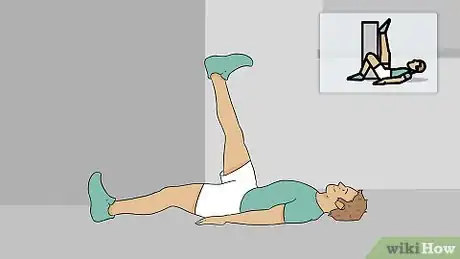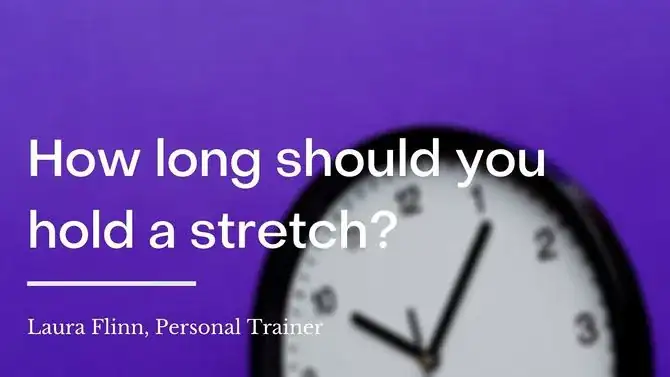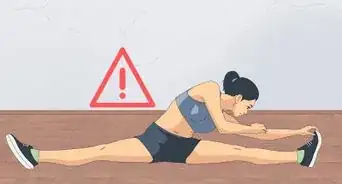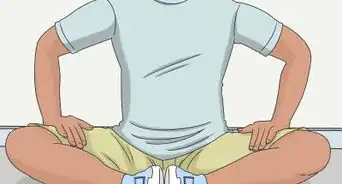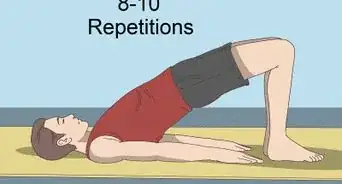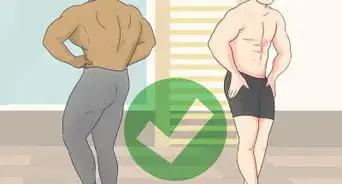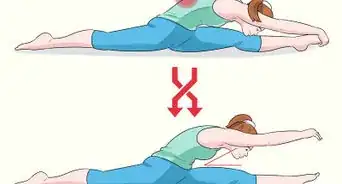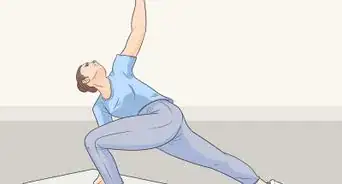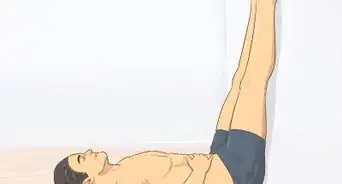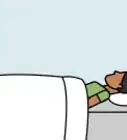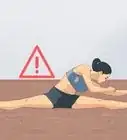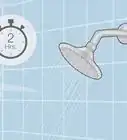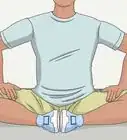This article was co-authored by Julian Arana, M.S.eD., NCSF-CPT. Julian Arana is a Personal Trainer and the Founder of B-Fit Training Studios, a personal training and wellness set of studios based in Miami, Florida. Julian has over 12 years of personal training and coaching experience. He is a certified personal trainer (CPT) by the National Council on Strength and Fitness (NCSF). He has a BS in Exercise Physiology from Florida International University and an MS in Exercise Physiology specializing in strength and conditioning from the University of Miami.
wikiHow marks an article as reader-approved once it receives enough positive feedback. In this case, 98% of readers who voted found the article helpful, earning it our reader-approved status.
This article has been viewed 954,185 times.
Your legs are propelled by your hamstrings, hip flexors, quadriceps, gluteals, and calf muscles. Stretching your legs will help you to prevent injury and also to prevent muscle soreness after walking, running, or cycling.
Steps
Floor Exercises to Stretch Your Legs
-
1Do a wall hamstring stretch. This stretch puts you in a different position to stretch not only your hamstrings but also the muscles of the calf. Try doing some ankle rotations in this position to stretch and strengthen your ankles. You can also push the soles of your feet against the wall for a stretch in your shins if you're suffering from shin splints. To do this stretch:
- Lie down on your back on a yoga mat or another supportive surface. Your bum should be as close to the wall as possible.
- Bring your legs up at a 90-degree angle so that they are perpendicular to the floor. Your hips and legs can rest against the wall. Your arms should be stretched out at the shoulders.
- Draw your toes down toward you, keeping your legs straight. Try to push your toes back down toward your body. As you do this, you should start to feel the stretch.
- Hold this position for as long as you can without strain or cramping, or for no more than about 60 seconds. Don't overextend yourself. Slowly, you'll build up your flexibility and stamina.
-
2Do a heel drop using stairs. The heel drop provides an excellent stretch for the calves. To stretch your legs 1 at a time, bend your left leg and place your left foot flat on the upper step. Drop your right heel below the level of the step. Hold this position for about 20-30 seconds. Then, switch sides. You can also perform this exercise on a bench provided that you give yourself something to hold onto.
- Repeat this exercise 1-3 times for each leg.
Advertisement -
3Do a quadriceps stretch with an exercise ball. This exercise shows you how to stretch your quads in a lunge position while sitting on the ball. However, you can also rest your hips on the ball, bend one heel toward your butt, and grasp your ankle, pulling your heel close to your butt, to stretch your quads. Repeat the stretch with the opposite leg.
-
4Do a standing quadriceps stretch. This stretch requires you to stand between 2 chairs of the same height. For this stretch, stand in between two sturdy chairs. Place the top of your food on the chair behind you so that it's sitting just above your knee. Keep both hands on the chair in front of you for support. Then, rock your pelvis upward until you feel a stretch in your thigh.
- As you perform this exercise, engage your abdominal muscles to keep your pelvis squared and to relieve tension on your back muscles.
- Hold this position for as long as is comfortable, or for 20-30 seconds. Repeat with your other leg. Do this stretch 1-3 times per leg.
- You can use a pillow or towel to pad the chair behind you if resting your leg directly on the chair back is uncomfortable.
Pilates and Yoga to Stretch Your Legs
-
1Do the Pilates roll down exercise. The Pilates roll down will stretch your hamstrings and calves while relieving tension in your back. If you need more support, then stand with your back and hips against a wall and with your feet about 6” from the wall. Keep your hips over your feet so that you don't hyperextend your knees, and concentrate on keeping your abdominal muscles scooped and lifted throughout the exercise.
- Do not attempt this exercise if you have back problems. It compresses the spine and can be painful and dangerous for those with a pre-existing back issue.
-
2Assume the seated forward bend pose in yoga. The seated forward bend is one of the 12 basic positions in hatha yoga. In addition to stretching the hamstrings and calves, this pose will help to relieve the symptoms of sciatica while stretching and lengthening the spine. The pose will also stimulate the solar plexus chakra and improve concentration.
- Do not attempt this exercise if you have any pre-existing back problems. This exercise compresses the spine, which can lead to pain or injury if you have a known back injury.
-
3Do the revolved head to knee pose in yoga. This stretch will open up the hips, stretch the hamstrings and calves, and deeply stretch the entire side of the body. Start by sitting in the center of your mat with your hands planted flat just a little behind you. Lean back slightly, open your legs as wide as you can, and tuck your left foot toward your right thigh. Then:
- Slide your right hand down your right leg, palm extended toward your toes.
- Grab your right foot with your right hand, if you are capable. If not, stretch your hand as far down your leg as it will go, and gently grasp your leg at your stopping point.
- Reach your left hand over your head and down toward your right foot. Gently and carefully try to turn your head toward the ceiling if you are comfortable doing so.
- Hold this position for 4-5 deep breaths before slowly letting your left arm go, bringing up your torso, and returning your legs to a neutral position.
- Repeat with the other leg.
-
4Do the standard forward bend in yoga. This stretch for your hamstrings and calves can be easily modified to match your flexibility level. If you cannot bend all of the way over, then place your hands on a wall in front of you so that your arms are parallel to the floor. If you need more of a challenge, then unfold your arms and grasp your ankles, bringing your head down to meet your knees.
- Extreme forward flexion such as practiced in this pose is not recommended to anyone with back problems, as it compresses the spine and may cause pain or injury.
-
5Do the cross beam yoga pose. Start by kneeling on your mat, with your upper body long and straight. Stretch your right leg out to the side, keeping your leg in line with your hips. Bring your arms parallel to the floor, level with your shoulders. Then, slide your right hand down toward your ankle, maintaining a side-bend at your waist. Fold your left arm over your right arm, bringing your palms as close together as possible. Hold this stretch for 4-5 deep breaths before repeating on the other side.
- This pose, also commonly called the “gate pose,” gets its name because your upper body crosses over to resemble the cross beam of a gate. It is an easy pose for those new to yoga.
-
6Do a reclining hero pose. To perform this, you will start in the hero pose with your legs tucked behind you, and your bum planted between your heels. Place your palms on your mat just behind your feet, then lean back as far as you can, walking your hands back with you. If you can, lower your body to the ground, using your elbows as support. Hold this pose for 4-5 deep breaths before releasing and using your arms to walk your body back up.
- If you cannot sit on the floor between your heels, then sit on a yoga block or a pillow so that your knees are comfortably tucked in beside you. You can also place a yoga block or pillow beneath your head and shoulders as you recline if you need more support.
-
7Do the warrior II pose in yoga. With your front leg in the “lunge” position, raise your arms out to shoulder level, keeping them parallel with your legs and the floor. Turn your head to face your front arm, exhale, and push as deep into your lunge as you can. Hold this pose for 4-5 deep breaths before releasing the bend in your forward knee and coming back to a neutral position. Then, repeat this stretch on the other leg.
- The warrior II pose will stretch your inner thighs.
-
8Do the butterfly pose. Sit upright on your mat with your legs extended in front of you. Slowly and gently bring each foot in as close to your groin area as possible. Once your feet are tucked, relax your knees and let them drop toward the mat. If you need additional stretch, try leaning forward at the waist toward your feet.
Expert Q&A
Did you know you can get expert answers for this article?
Unlock expert answers by supporting wikiHow
-
QuestionHow long should you hold a stretch?
 Laura FlinnLaura Flinn is a National Academy of Sports Medicine (NASM) Certified Personal Trainer, USA Olympic Weightlifting Sports Performance Coach and Certified Fitness Nutritionist, with an additional qualification as a TRX Suspension Trainer. Laura runs her own personal training program based in the San Francisco Bay Area and specializes in topics such as weight loss, muscle growth, cardiovascular training, and strength training.
Laura FlinnLaura Flinn is a National Academy of Sports Medicine (NASM) Certified Personal Trainer, USA Olympic Weightlifting Sports Performance Coach and Certified Fitness Nutritionist, with an additional qualification as a TRX Suspension Trainer. Laura runs her own personal training program based in the San Francisco Bay Area and specializes in topics such as weight loss, muscle growth, cardiovascular training, and strength training.
NASM Certified Personal Trainer
-
QuestionWhen should I loosen tight leg muscles?
 Julian Arana, M.S.eD., NCSF-CPTJulian Arana is a Personal Trainer and the Founder of B-Fit Training Studios, a personal training and wellness set of studios based in Miami, Florida. Julian has over 12 years of personal training and coaching experience. He is a certified personal trainer (CPT) by the National Council on Strength and Fitness (NCSF). He has a BS in Exercise Physiology from Florida International University and an MS in Exercise Physiology specializing in strength and conditioning from the University of Miami.
Julian Arana, M.S.eD., NCSF-CPTJulian Arana is a Personal Trainer and the Founder of B-Fit Training Studios, a personal training and wellness set of studios based in Miami, Florida. Julian has over 12 years of personal training and coaching experience. He is a certified personal trainer (CPT) by the National Council on Strength and Fitness (NCSF). He has a BS in Exercise Physiology from Florida International University and an MS in Exercise Physiology specializing in strength and conditioning from the University of Miami.
Certified Personal Trainer
-
QuestionHow do you loosen tight leg muscles?
 Julian Arana, M.S.eD., NCSF-CPTJulian Arana is a Personal Trainer and the Founder of B-Fit Training Studios, a personal training and wellness set of studios based in Miami, Florida. Julian has over 12 years of personal training and coaching experience. He is a certified personal trainer (CPT) by the National Council on Strength and Fitness (NCSF). He has a BS in Exercise Physiology from Florida International University and an MS in Exercise Physiology specializing in strength and conditioning from the University of Miami.
Julian Arana, M.S.eD., NCSF-CPTJulian Arana is a Personal Trainer and the Founder of B-Fit Training Studios, a personal training and wellness set of studios based in Miami, Florida. Julian has over 12 years of personal training and coaching experience. He is a certified personal trainer (CPT) by the National Council on Strength and Fitness (NCSF). He has a BS in Exercise Physiology from Florida International University and an MS in Exercise Physiology specializing in strength and conditioning from the University of Miami.
Certified Personal Trainer
Warnings
- Never bounce your body in an attempt to stretch further. This is especially tempting because many leg stretches require you to reach toward your toes. Not only does this jerking motion offer little benefit; it also places you at risk for injury.⧼thumbs_response⧽
Things You'll Need
- Exercise ball
- Chair
- Yoga mat
- Yoga strap (optional)
- Yoga block (optional)
References
- ↑ Julian Arana, M.S.eD., NCSF-CPT. Certified Personal Trainer. Expert Interview. 19 May 2020.
- http://pilates.isport.com/pilates-guides/how-to-do-the-standing-roll-down-in-pilates
- http://www.yogabasics.com/seated-side-bends/revolved-head-to-knee.html
- http://www.yogajournal.com/poses/478
- http://www.yogabasics.com/standing-yoga-poses/warrior-ii.html
- http://www.hss.edu/conditions_stretching-tips.asp
About This Article
Stretching your legs can help improve your flexibility, reduce your risk of injury, and relieve soreness. There are a lot of easy leg stretches you can try in order to stretch different muscles in your legs. To stretch your quadriceps, or the muscles on the fronts of your thighs, lift your right leg, bend your knee so your foot is behind you, and grab your right foot with your left hand behind your back. Hold for 30 seconds, then repeat with your other leg. To stretch your hamstrings, or the muscles on the backs of your thighs, sit on the floor with your legs extended out in front of you. Then, gently lean forward while keeping your back straight. Hold for 30 seconds. To stretch your calves, or the muscles on the backs of your lower legs, step forward with one leg, then shift your weight forward while keeping your back heel planted on the floor. Hold for 30 seconds, then repeat with your other leg. Do each of these stretches 2-4 times. Try to stretch your legs at least 2-3 days per week. It’s always best to stretch your muscles when they’re warmed up, so go for a 5-10 minute walk before you get started. Read more for tips from our Personal Trainer reviewer on how to stretch using yoga!
